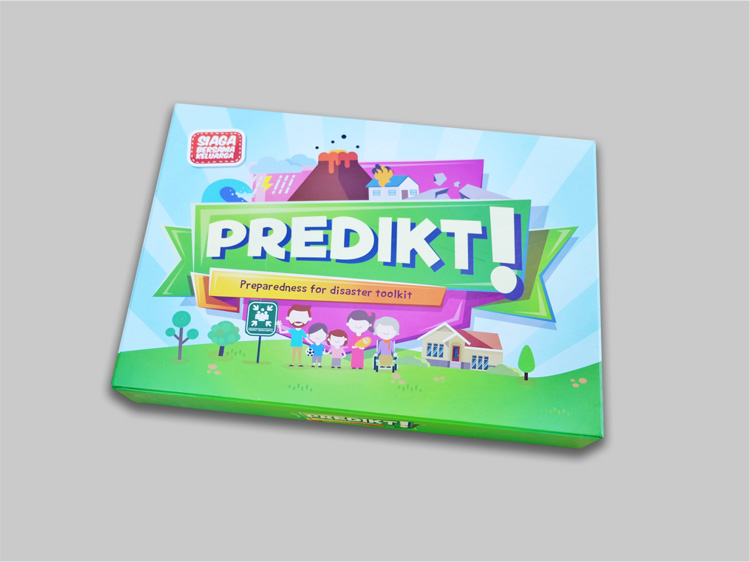Vol 37-Thailand

THAILAND
Thailand is often known as the heart of Southeast Asia, as it lies in the centre of the ASEAN Region, sharing borders with Cambodia, Lao PDR, Malaysia, and Myanmar. The nation is home to a variety of geographical features – including mountains, flatlands, coastal regions, rivers and wetlands – with its proximity to the equator ensuring a hot and steamy climate throughout most of the year, with a climate controlled by tropical monsoons.
While the risk of natural disaster in Thailand is generally lower than the rest of the ASEAN nations due to land masses in the east providing protection from typhoons, and the fact that the country does not lie on a tectonic plate boundary – the interaction between humans and the environment often sees Thailand experience high occurrence of disaster from natural hazards. Floods, drought and landslides disasters are often the result of this complex interaction between humans and their surrounds.
FLOOD
Without doubt, flood forms the greatest natural hazard to Thailand and its citizens, with all regions throughout the country prone to experiencing disaster events and damages due to flooding. There is flash-flooding in the river basins of the south and central deltas, monsoonal floods in Thailand’s coastal regions, and flooding in mountainous areas as the arid land struggles with absorbing the rain caused by unstable mountainous weather systems. High numbers of communities living along the nation’s rivers and coast often feel the full force of these yearly occurrences. Between 1987 to February 2018, Thailand experienced 77 flood events, impacted the nation’s population and economy.
DROUGHT
Accelerated by the impact of a changing climate, drought events have become increasingly prevalent in Thailand, particularly in the nation’s central and eastern regions. The months between January and May often see drought conditions become increasingly severe, as communities await alleviation through the onset of the monsoon season. Drought in Thailand has a significant impact on the nation’s agricultural industry, and consequently can affect the country’s food supply and economy. Alongside this, weather anomalies have also resulted in severe drought emergencies. For example, El Niño in 2014 impacted over 20,000 villages in Thailand’s north, having a run-on effect to agricultural production, food supplies and the nation’s economy.
LANDSLIDE
Landslides form a significant hazard for Thailand’s mountainous northern and eastern regions, as the struggle between arid lands due to the dry season and the onset of monsoonal rains plays out. This struggle often results in large and unexpected landslides, at times amplified by the existence of land degradation due to deforestation. With such events occurring in more remote, mountainous locations, vulnerable populations tend to be from rural commu-nities, and impacts are often further accentuated due to poor building practices within these remote villages. 2011 saw Thailand’s worst landslide event, with an entire village engulfed by mudflow, with 110 residents lost their lives due to the unexpected natural disaster.
Written by : William Shea
All information sourced from ‘Viet Nam Disaster Management Reference Handbook: 2015’, as developed by the Center for Excellence in Disaster Management and Humanitarian Assistance (CFE-DM).
- Published in Insight
Vol 39-PREDIKT Team

PREDIKT TEAM
Disaster awareness and preparedness forms a key element within overall disaster management efforts, supporting significant decreases in severity of disaster impact on affected communities. While there is a vast array of science and knowledge behind awareness and preparedness, there remain many challenges in communicating such knowledge to a vast and diverse communities across the ASEAN region. Developing engaging, child and family-friendly tools for communicating disaster awareness and promoting preparedness is the defining element behind the creation of PREDIKT – the Preparedness for Disaster Toolkit – a unique and innovative toolkit designed by a group of young Indonesian change-makers. One of PREDIKT’s designers, Avianto “Anto” Amri, spoke to The Column about this innovative and interesting project.
The idea for PREDIKT came about due to the designer’s personal experiences of a lack of family-friendly information and tools for disaster awareness and preparedness in the home – particularly to support parents and their children on learning about disaster preparedness together. As many children are at home when disaster strikes, in-home learning forms a key element of overall disaster preparedness efforts, and empowers children and their families with the knowledge of what must be done should they face a disaster.
Initially, as part of his PhD studies, Anto designed a family disaster preparedness plan in the form of poster guidance cards that allowed children and their parents to learn essential steps for ensuring preparedness within their homes. Based on positive testing results, Anto teamed-up with Tasril “Iriel” Mulyadi (designer) and Wahyu “Billie” Minarto (child safety expert), to further develop and then submit
the toolkit to a Flood Resilience Innovation competition organised by the International Federation of the Red Cross/Red Crescent Societies (IFRC) and Zurich Insurance – a competition in which their innovation took out first place. This was followed by the team proposing for, and being awarded a grant for the toolkit through the United States Government-sponsored Young Southeast Asian Leaders Initiative (YSEALI) Seeds for the Future programme, and with the addition of another team member – Meliza “Liza” Rafdiana – PREDIKT hit the ground running.
PREDIKT itself is formed by a set of board games and physical learning materials that form a fun and hands-on way for children and their parents to learn about disaster preparedness at home. As the ASEAN region continues to modernise, many such tools have moved to online and electronic platforms – yet PREDIKT chose to focus on a more traditional, physical style. As stated by Anto, online platforms still face significant limitations within a rapidly developing ASEAN community.
“We wanted to create something offline because we know that there are still many places in Indonesia as well as in many ASEAN countries that do not have access to internet or even electricity.”
– Anto explains.
Here-in lies the inclusiveness and accessibility of the PREDIKT format. The team also aims to facilitate a fun and interactive atmosphere for the entire family, allowing children to engage with their parents and ask questions related to disaster preparedness.
The toolkit bases itself on five key elements, all of which add-up to form the reason for its attractiveness and functionality. PREDIKT has been developed to be easy to understand, using child-friendly wording and visual elements, and also aims to motivate children to discuss preparedness with their family. The toolkit always aims to remain affordable, alongside its offline status to ensure access for any family regardless of their situation. Finally, PREDIKT aims to be expandable, allowing it to be further developed to encompass a range of other relevant elements related to disaster hazards and preparedness functions. This expansion forms a key facet of PREDIKT’s plans for the near future. Currently focusing on 5 specific disaster hazards, the team is in the process of expanding the toolkit to cover a wider range of disaster content. Alongside this, they are also working
institutions to increase the toolkit’s inclusivity – with particular focus to children with visual impairments or other disabilities. Not disregarding the importance of online presence, PREDIKT also plans to focus towards building and strengthening their website as an online hub for child-friendly disaster preparedness information sharing.
As for the response, so far PREDIKT has received great praise – particularly from users themselves. “We continue to be amazed with the reactions of parents who have played PREDIKT”, says Anto. He recalls a mother who was particularly excited by the toolkit’s ability to allow her children to learn as they play. “She was excited that finally her children would take their eyes off their gadgets to engage with her in learning and games”. “It’s like taking a course on disaster preparedness, minus all the boring parts” says Anto as he quotes another response from a happy mother. The variety of positive responses continue to display the value in the engagement of children, as well as their desire to ask questions and learn more. These responses evidence the importance and aims of PREDIKT itself, as concluded by Anto when he stated that “PREDIKT really does fill the gap for children to learn, together with their parents, about disaster preparedness in a fun and interactive way”.
Written by : Shintya Kurniawan | Photo : AHA Centre, PREDIKT
- Published in The Other Side



